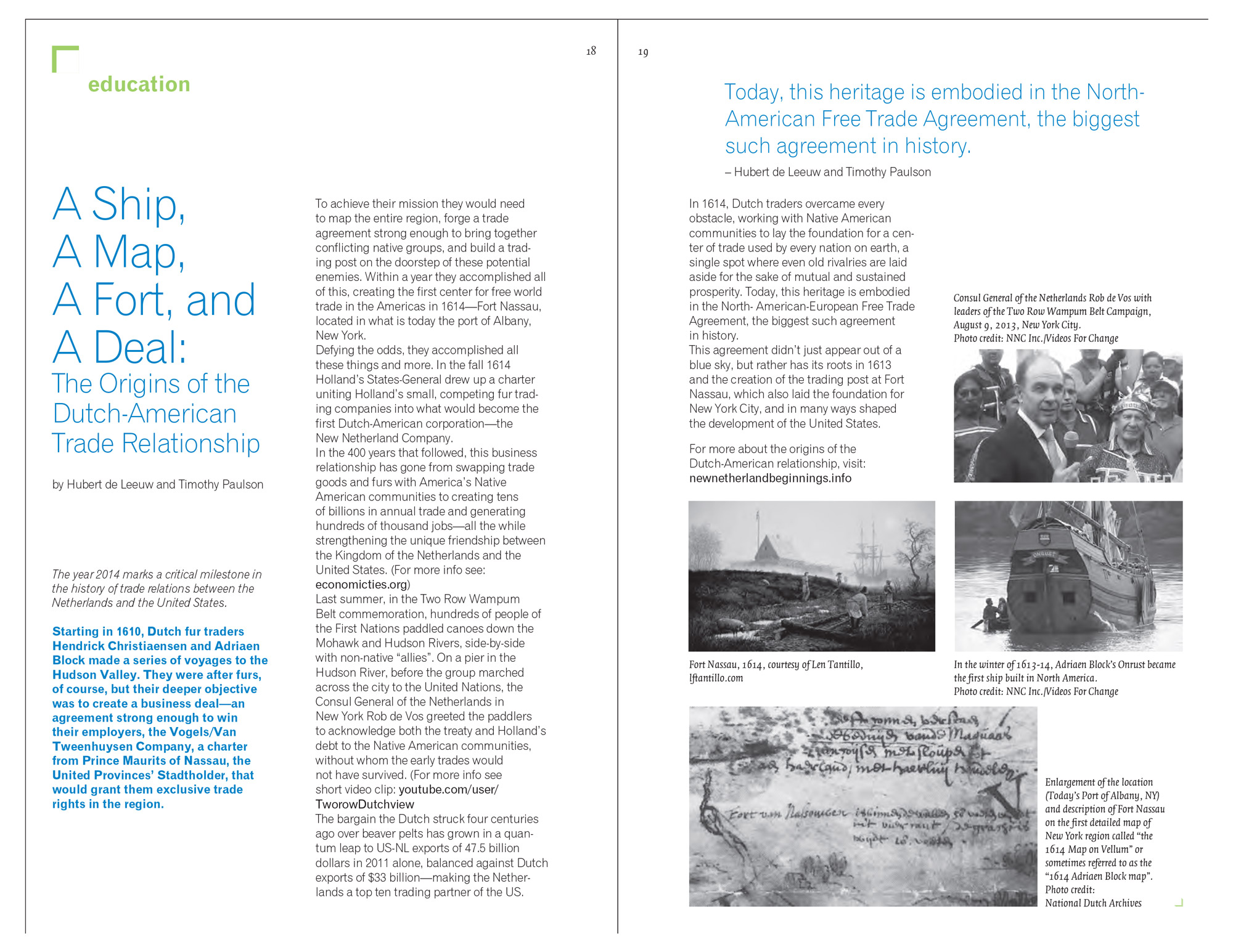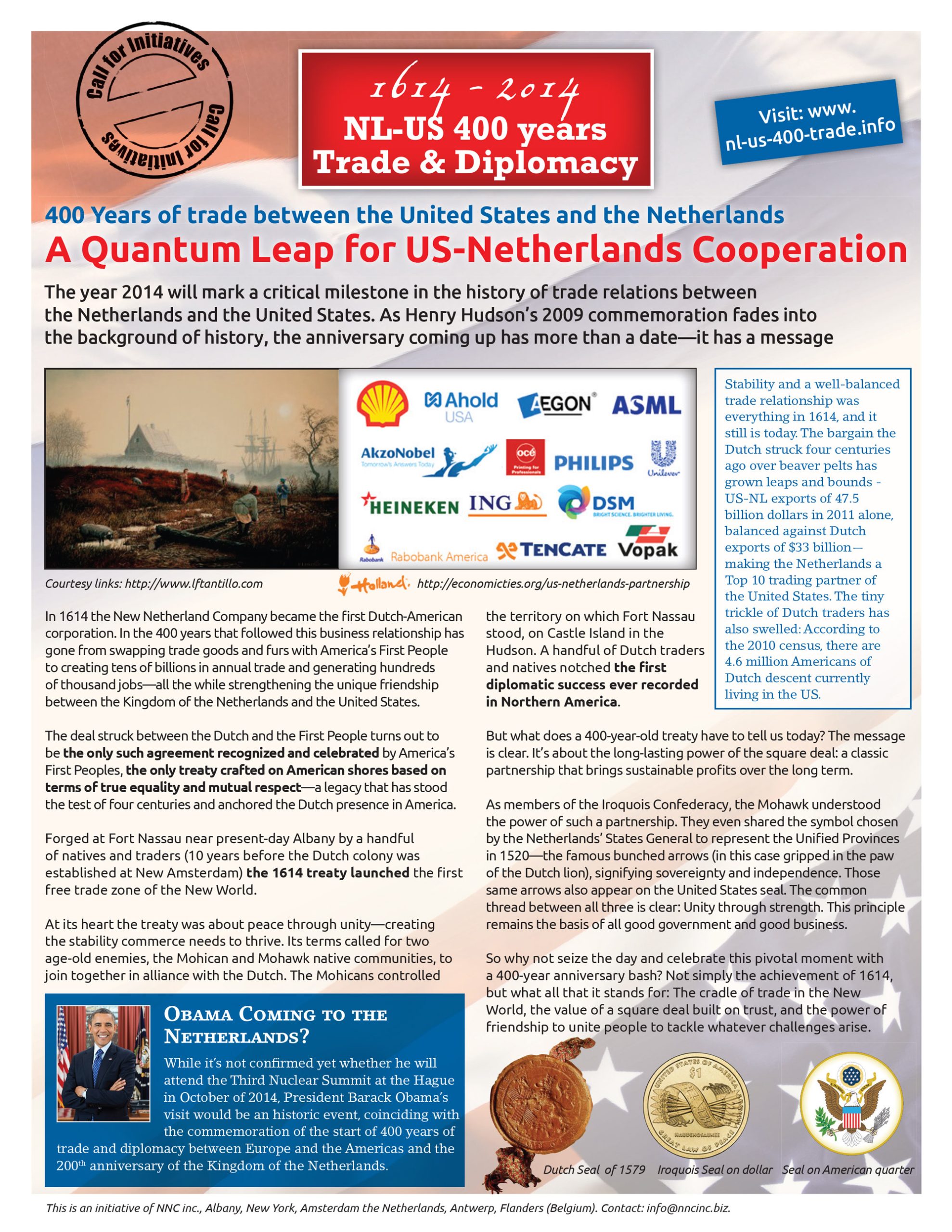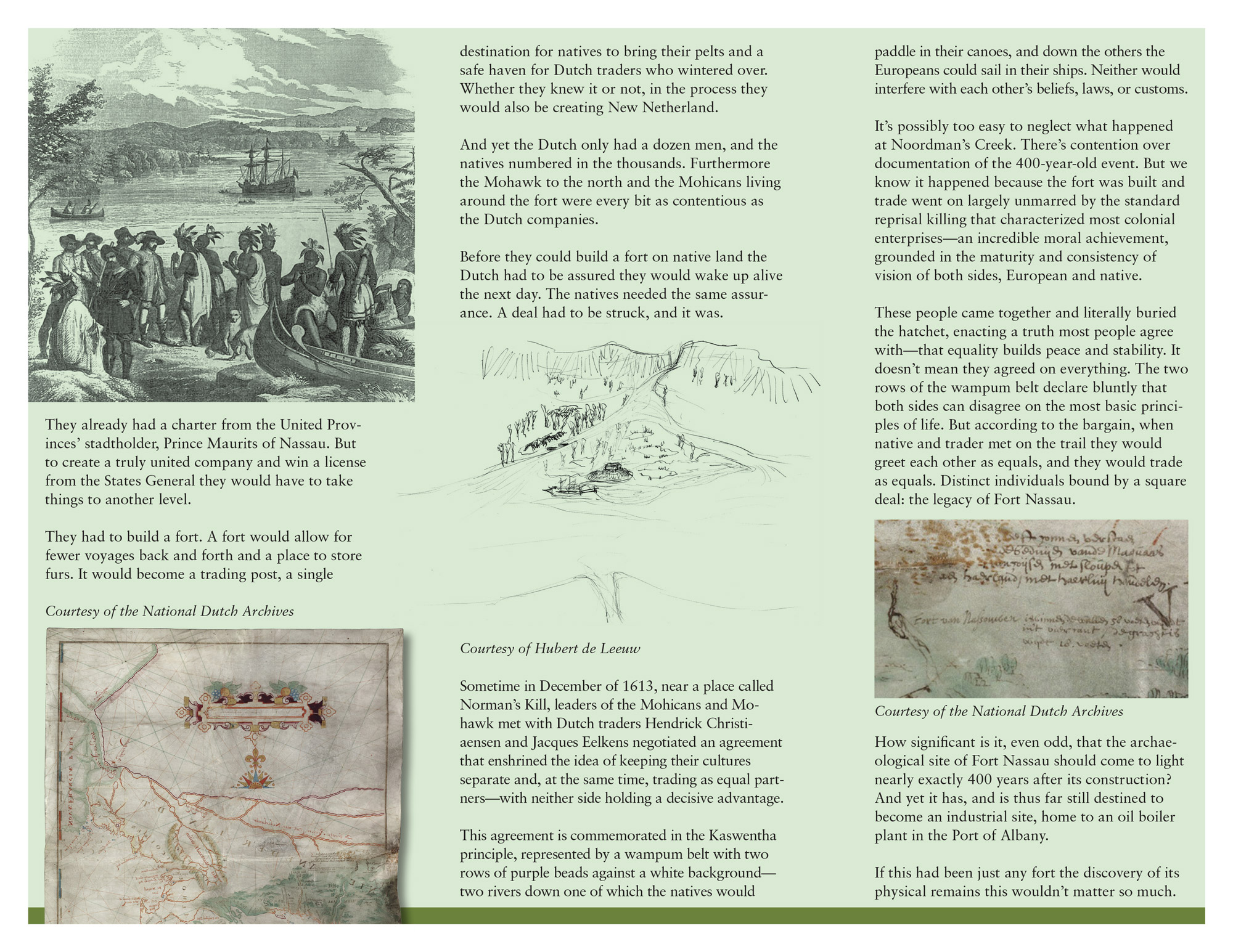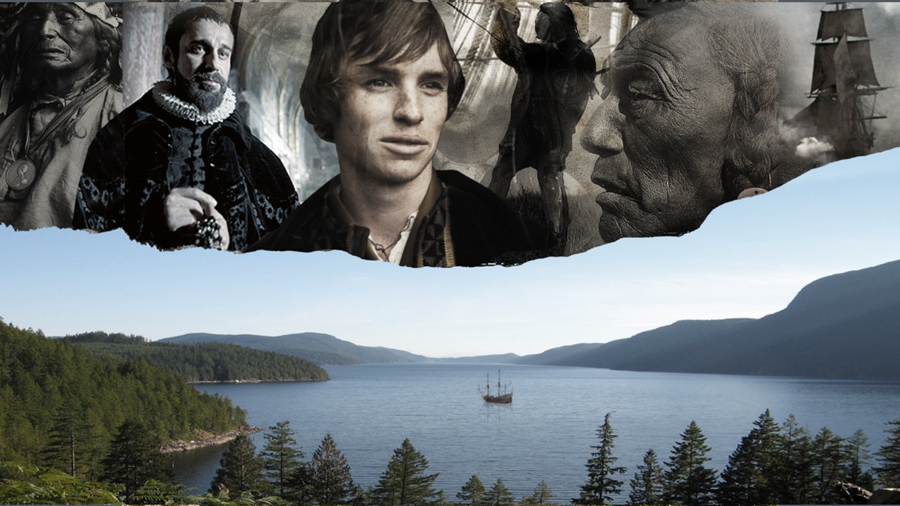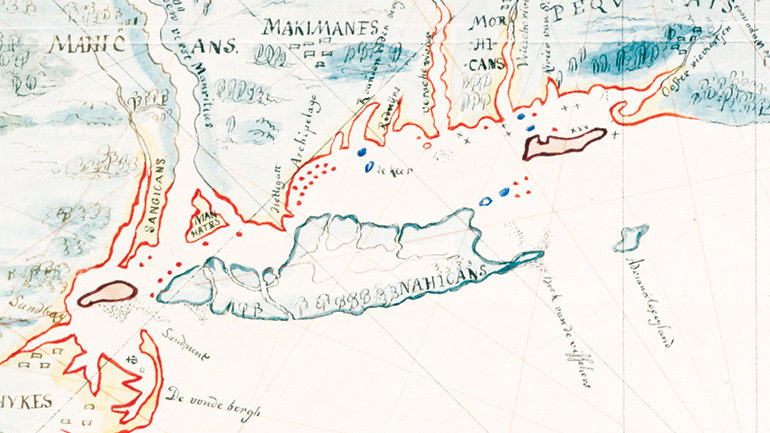New Netherland Company
Building Sustainable Relationships
Building sustainable relationships is key for a sustainable trade and business. “Respect, Friendship and Peace” were the ingredients that were brought in by the indigenous people, thus creating the perfect circumstances for sustainable living next and with each other. This is symbolized with Two Row Wampum Belt agreement, that was (and still is) at the core of the relationship between the Dutch and the 6 nations, Iroquois, Haudenosaunee.
This year, 2024, it is 400 years ago that the first colonists arrived on Noten Island todays Governance Island In front of the island Manhatta. New Netherland came officially to be even the region already existed since 1614.
In 2025, we will commemorate the 400th anniversary of New York “seeing the light” – the date that Fort New Amsterdam was built on Manhatta Island and the date consecrated on the city flag as the year of its birth.
This remarkable achievement was only made possible because ten years earlier, in 1614, enterprising Dutch skippers and traders had already established sustainable trade relationships with diverse native communities on the “Mahicanuck” (The river that flows both ways) today the Hudson river. As a result, they were given permission to build a trading post called Fort van Nassauen on Castle Island, located up north along the river. A place where all could come to meet and trade. A first Free Trade Zone, a trade Center in the new world. Fort Nassau out of which Albany, the Capital City of New York, and its Capital Region eventually flourished.
What’s truly remarkable is that the Dutch skippers and traders formed lasting agreements with the native communities, agreements that are still remembered by them in a positive light to this very day.
The skippers and traders named the region New Netherland and establish the esteemed New Netherland Company, which obtained an exclusive license from Prince Mauritz and the Dutch government at the time—the States General. With this, the Dutch firmly anchored themselves in North America, firmly establishing a presence between their much larger European rivals: England, France, and Spain.
It is often said that this journey began when the English explorer Henry Hudson, sailing for the Dutch, “discovered” the river, making him the celebrated founding father of New Netherland, which we now know as New York. However, recent Dutch research has revealed a different narrative, exposing the fact that Hudson’s tale is, at its core, an English and Anglo-American creation for making claim to the region which the Dutch had settled themselves because it was discovered by an Englishman. The paradox is that also the Dutch needed Hudson to make claim as he was sailing in their service. And so “heroes” are born and “histories” written.
New Netherland, though lasted a mere fifty years before falling into English hands with hostility in 1664 but planted the seeds of Dutch-American legacy that shaped the formation of the United States fostering unique Dutch-American relationships.
Let us however not forget that all of this was made possible because of the native communities who traded with the Dutch, and had given their consent to settle and even provided them with sustenance, shelter and even offered them protection.
Today’s New Netherland Company Inc. remains steadfast in its mission to raise awareness about this remarkable tale—the tale of how sovereignty, free trade, tolerance, freedom of religion, unity but for all friendship, respect and peace can build sustainable relationships, enabling us to live alongside and support one another.
Some more background
Dutch-American Economic Ties
In 2022, the United States exported $100.7 billion in goods and services to the Netherlands while importing $49.3 billion from the Netherlands. As a result, the trade surplus with Netherlands increased to $51.4 billion, making the Netherlands the trading partner with which the US has the highest trading surplus.
Book Store
Under the title, “Coming to Terms with Early New Netherland – New York History”, Hubert de Leeuw, in collaboration with Timothy Paulson, has issued a trio of English language books wit a new interpretattion on the origins of New Netherland.
You can download these books, as PDF, free of charge. To buy them as an e-book, or as a paperback is also possible.
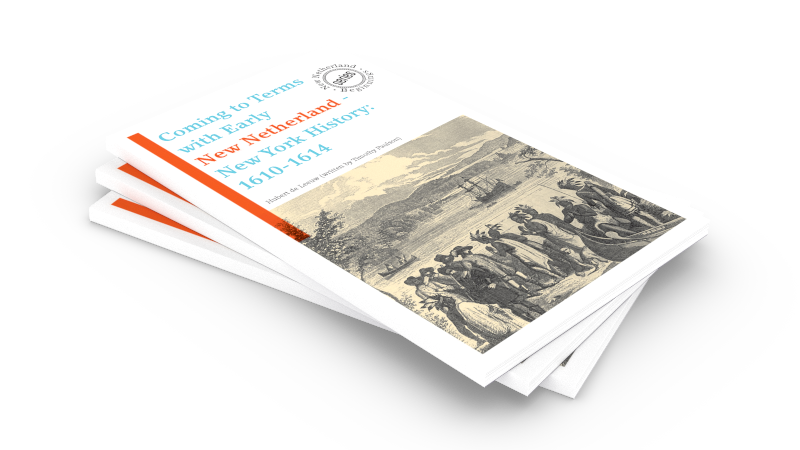
E-book (via Gumroad): $4.95
E-book or paperback (via Amazon): $4.95
paperback (via Bookpatch): $ 7.63 (incl. verzendkosten en handling)
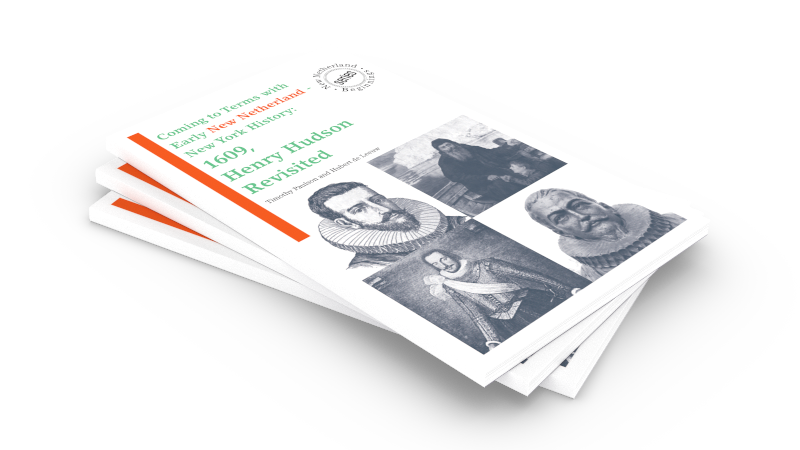
In 1609, the English explorer who first discovered the valley of the Muhheakantuck River, Henry Hudson, is subjected to critical examination. Although Hudson is hailed as a hero today, the question arises: did he truly deserve all the credit he received?
E-book (via Gumroad): $4.95
E-book or paperback (via Amazon): $4.95
paperback (via Bookpatch): $ 7.63 (incl. verzendkosten en handling)
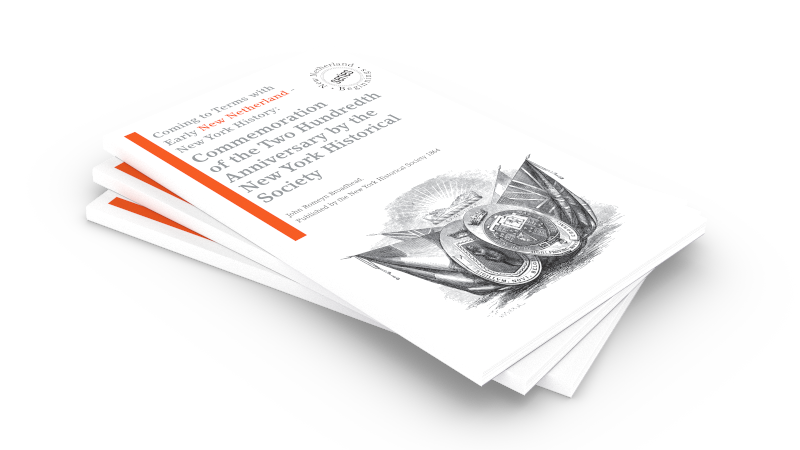
Commemoration of the Two Hundreth Anniversary by the New York Historical Society
A reissue of the surprisingly pro-Dutch commemorative speech delivered in 1864 by American historian J.R. Brodhead for the New York Historical Society regarding England’s takeover of New Netherlands.
E-book (via Gumroad): $4.95
E-book (via Amazon): $4.95
Some more background on NNCinc
Now semi-retired, Hubertus has decided to focus on cultural exchange and establishing new trading and business relationships through the New Netherland Company. Join him on this exciting journey as he seeks to honor the legacy of New Netherland and forge a brighter future together.
Research
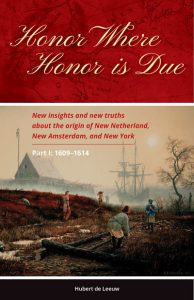 Embark on a captivating journey through history with the highly anticipated release of Honor Where Honor is Due. This extraordinary pamphlet, set to be published in May 2025, offers a fresh and enlightening perspective on the origins of New York and the unique Dutch-American relationship. Delve into the period of 1609–1614, where the untold stories of courageous Dutch sailors and visionary merchants come to life, laying the genuine foundations for the magnificent city and state we know today. Uncover the remarkable voyage of Henry Hudson aboard the legendary Halve Maen in 1609, a voyage that forever shaped the course of history. The second part of this extraordinary diptych delves into the period of 1615–1624, providing further insights into the captivating world of Honor Where Honor is Due. Get a sneak peek into the first part of this compelling journey and discover the treasures that await you within its pages.
Embark on a captivating journey through history with the highly anticipated release of Honor Where Honor is Due. This extraordinary pamphlet, set to be published in May 2025, offers a fresh and enlightening perspective on the origins of New York and the unique Dutch-American relationship. Delve into the period of 1609–1614, where the untold stories of courageous Dutch sailors and visionary merchants come to life, laying the genuine foundations for the magnificent city and state we know today. Uncover the remarkable voyage of Henry Hudson aboard the legendary Halve Maen in 1609, a voyage that forever shaped the course of history. The second part of this extraordinary diptych delves into the period of 1615–1624, providing further insights into the captivating world of Honor Where Honor is Due. Get a sneak peek into the first part of this compelling journey and discover the treasures that await you within its pages.
The Wampum Belt Project
Your content goes here. Edit or remove this text inline or in the module Content settings. You can also style every aspect of this content in the module Design settings and even apply custom CSS to this text in the module Advanced settings. You can also style every aspect of this content in the module Design settings and even apply custom CSS to this text in the module Advanced settings.
Movie and documentary
This agreement didn’t just appear out of a blue sky, but rather has its roots in 1613 and the creation of the trading post at Fort Nassau, which also laid the foundation for New York City, and in many ways shaped the development of the United States.
